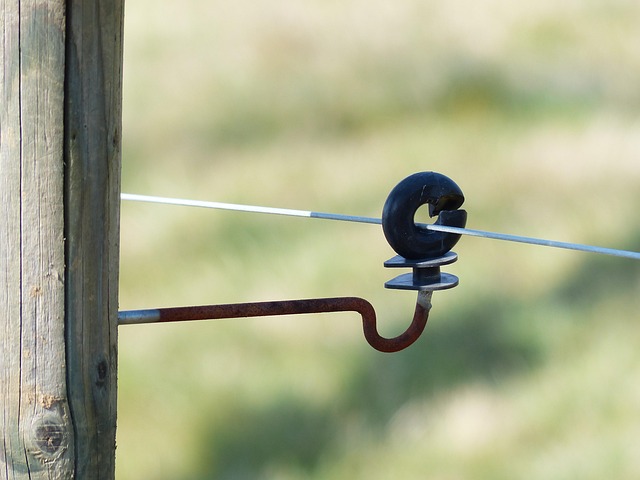New Bedford, MA, is embracing sustainable living with a focus on eco-friendly fencing materials. This shift not only reduces environmental impact but also offers aesthetic and functional benefits for property owners. By exploring options like natural materials, biodegradable fences, and local ecosystem enhancement, residents can contribute to a greener community. This article delves into these topics, providing installation tips and highlighting community initiatives that promote environmentally conscious solutions.
- Exploring Eco-Friendly Fencing Options in New Bedford
- Benefits of Sustainable Fencing for Your Property
- Natural Materials: A Guide to Biodegradable Fences
- How Eco-Fencing Enhances Local Ecosystems
- Installation Tips for Long-Lasting Green Fences
- Community Initiatives Promoting Eco-Friendly Solutions
Exploring Eco-Friendly Fencing Options in New Bedford
In New Bedford, MA, exploring eco-friendly fencing options is a growing trend among environmentally conscious residents and businesses. The city’s commitment to sustainability makes it an ideal place to showcase these innovative materials. Options like recycled plastic, bamboo, and organic wood not only reduce environmental impact but also offer aesthetic appeal and long-term durability.
These sustainable fencing materials come with numerous benefits, including lower maintenance costs over time, resistance to rot and pests, and the ability to blend seamlessly with natural landscapes. New Bedford’s diverse climate demands robust solutions, and eco-friendly fences meet these challenges while contributing to a greener community.
Benefits of Sustainable Fencing for Your Property
Sustainable fencing materials offer numerous advantages for New Bedford property owners who prioritize environmental responsibility and aesthetics. One of the key benefits is their reduced ecological footprint. Unlike traditional wooden fences, which often rely on non-sustainable practices in manufacturing and can contribute to deforestation, eco-friendly options utilize recycled or renewable resources. This not only minimizes damage to local ecosystems but also helps combat climate change by reducing carbon emissions associated with production and transportation.
Additionally, these modern fencing solutions enhance the overall beauty of your property. They come in a variety of styles, colors, and textures that complement various architectural designs, from rustic charm to contemporary minimalism. Sustainable fences can also contribute to energy efficiency. Some materials have insulating properties, helping regulate temperatures in New Bedford’s varying climates, thereby reducing heating and cooling costs. Moreover, their longevity ensures low maintenance and reduced waste, making them a wise investment for any homeowner concerned with both style and sustainability.
Natural Materials: A Guide to Biodegradable Fences
Natural materials offer an eco-friendly alternative to traditional fencing, providing both aesthetic appeal and environmental benefits. Biodegradable fences, made from renewable resources, are gaining popularity in New Bedford, MA, as a sustainable solution for landscaping and property boundaries. These materials range from wood alternatives like bamboo and recycled plastic composites to organic options such as straw bales and living fences.
For instance, bamboo fencing is renowned for its strength and versatility while being rapidly renewable. Similarly, straw bale fences provide a rustic look and excellent privacy, with the added bonus of eventual biodegradability. Living fences, featuring plants that grow along a barrier, offer both visual appeal and ecological value by supporting local wildlife and improving soil health. Choosing natural materials not only reduces environmental impact but also contributes to a more harmonious integration of human habitats with the surrounding natural landscape in New Bedford.
How Eco-Fencing Enhances Local Ecosystems
Eco-friendly fencing materials are not just a sustainable choice; they actively contribute to enhancing local ecosystems in New Bedford, MA. These materials, often made from renewable resources like wood chips, bamboo, or recycled plastic, provide a habitat and food source for various wildlife species. For instance, living fences made with native plants can attract beneficial insects, birds, and small animals, promoting biodiversity within the neighborhood.
Moreover, eco-fencing helps in reducing the urban heat island effect by providing natural shade, thereby lowering temperatures compared to traditional materials like concrete or metal. This is particularly significant in densely populated areas like New Bedford, where proper insulation and temperature regulation are crucial for both human comfort and the well-being of local plant and animal life.
Installation Tips for Long-Lasting Green Fences
When installing eco-friendly fencing materials, such as recycled plastic or bamboo, proper technique is key to ensuring longevity and structural integrity. Start by preparing the ground, clearing any debris or plants within the fence line. Loosen compacted soil to allow for adequate drainage and root growth if planting near the fence.
Next, measure and mark the intended fence line accurately. Use stakes and string to create a straight, level guide. Dig holes for posts, ensuring they are deep enough to provide stability against shifting soils. Place posts in the holes, backfill with soil, and compact gently to secure them firmly. For vertical boards or panels, use spacers to maintain uniform gaps between them, then fasten securely with screws or nails. Regular inspection and maintenance, including tightening connections over time, will contribute to a durable, beautiful green fence that serves as an eco-conscious asset in New Bedford, MA.
Community Initiatives Promoting Eco-Friendly Solutions
New Bedford, MA, has seen a growing community initiative to adopt eco-friendly solutions, particularly in urban planning and infrastructure development. Local residents and environmental groups have been actively promoting sustainable practices, including the use of eco-friendly fencing materials. These efforts reflect a broader trend across the country toward more environmentally conscious living.
One notable aspect is the increased awareness and adoption of natural, renewable, or recycled fencing options. Community members are opting for materials like bamboo, wood from sustainable sources, or even recycled plastic to create beautiful and functional fences that contribute to a greener environment. Such initiatives not only enhance the aesthetic appeal of neighborhoods but also provide long-lasting solutions, reducing waste and minimizing the carbon footprint associated with traditional fencing materials.
